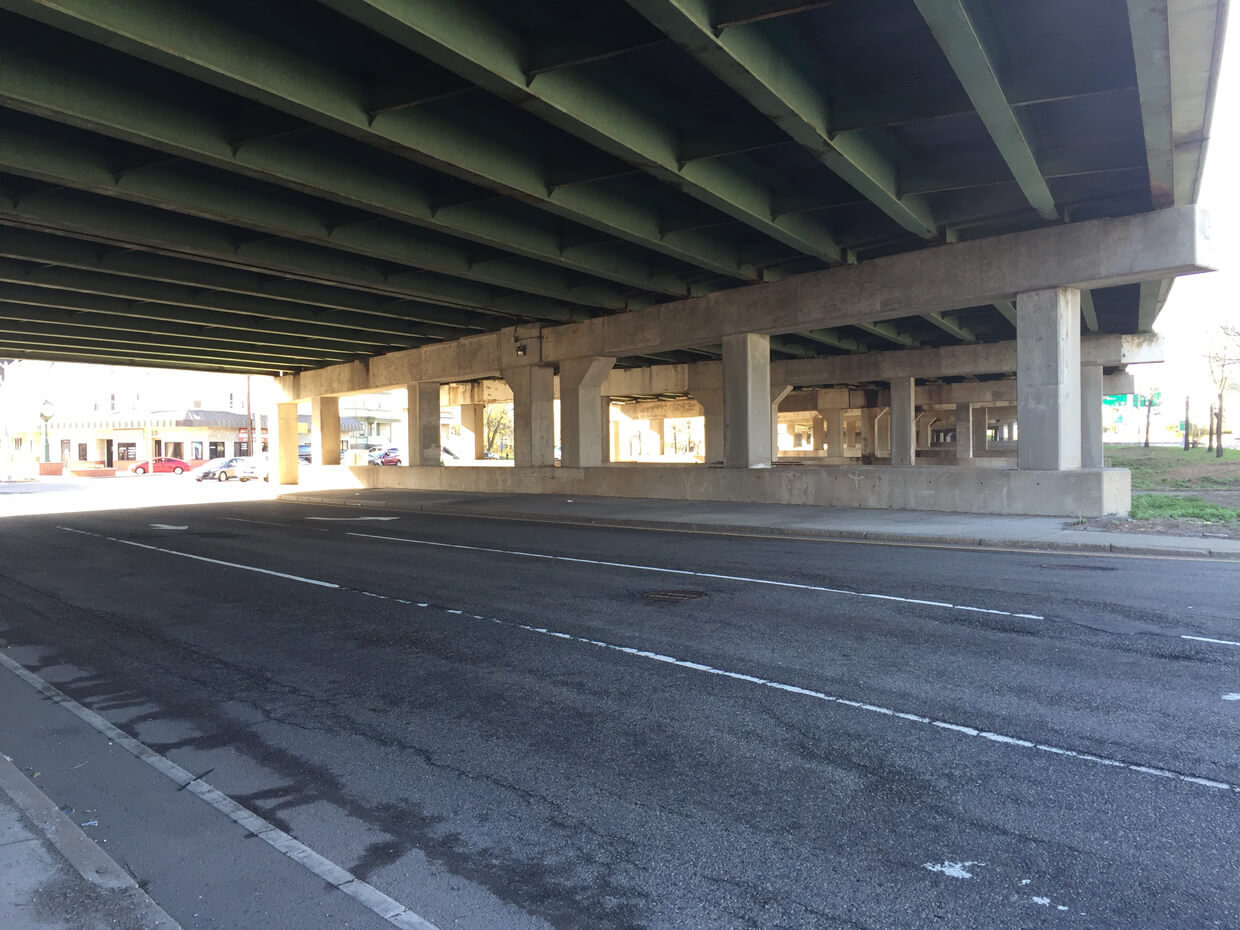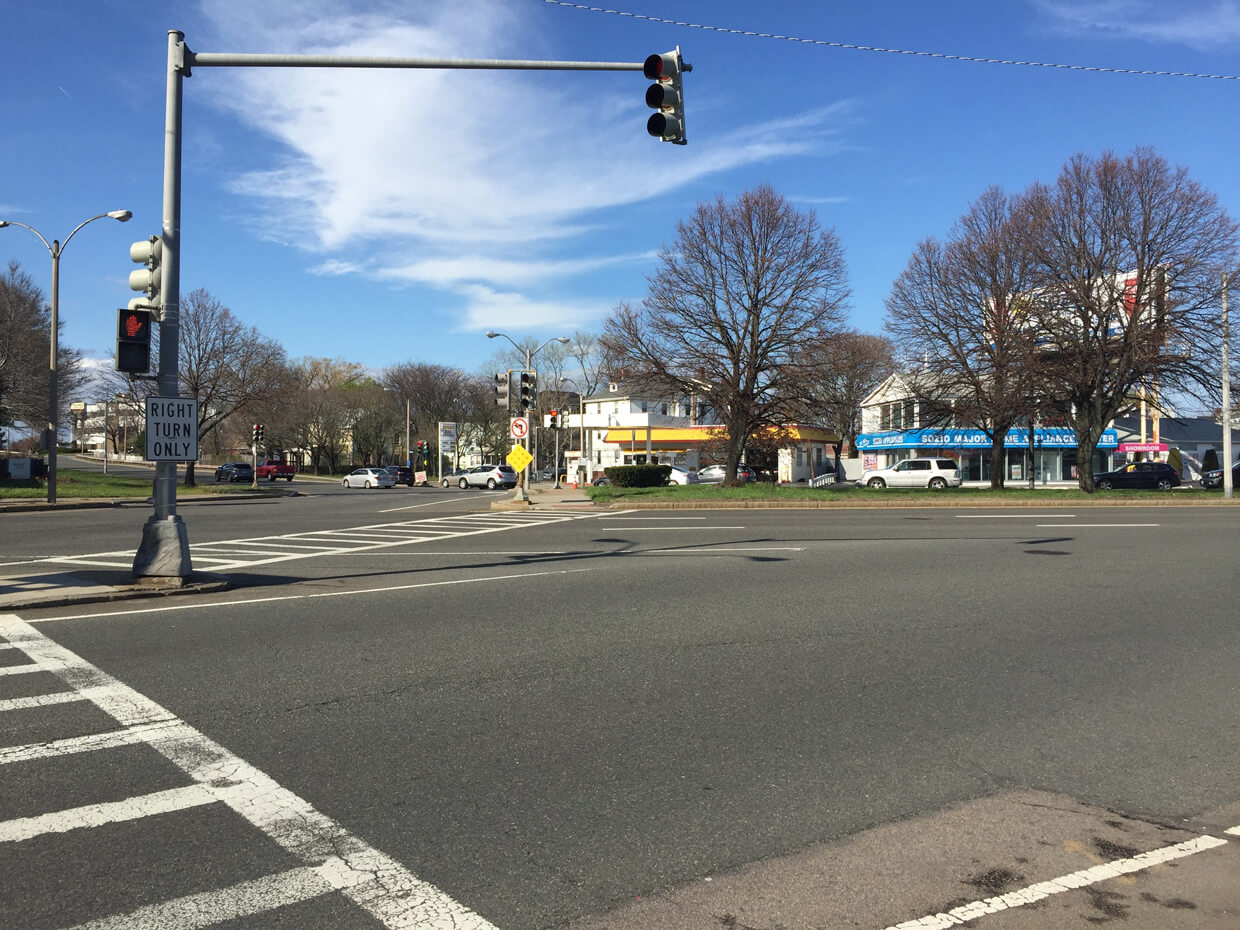Ricochet is the best place on the internet to discuss the issues of the day, either through commenting on posts or writing your own for our active and dynamic community in a fully moderated environment. In addition, the Ricochet Audio Network offers over 50 original podcasts with new episodes released every day.
 Share Your Local Traffic Nightmares
Share Your Local Traffic Nightmares
There is a certain kind of traffic intersection in which the design transcends mere incompetence and inattention and enters the realm of genuine malice. These atrocities don’t just inconvenience or endanger commuters and pedestrians, but embody active hatred and threat against them. For example, our own Fred Cole recently brought to my attention this horror show, which is — blessedly — being renovated but, in the interests of gaining a certain kind of dark knowledge, I propose the following contest: Let’s see who among us has the worst traffic intersection in their area.
For my own local example, I refer you to Neponset Circle. Located at the extreme southern edge of Boston, this spiteful, vindictive geometric sprawl links no fewer than five different roads, three of which are center-divided, and one of which is a half-mile-long bridge. Add to this two — two! — 180-degree turnarounds that are not part of the circle itself, multiple shortcuts between some of the roads, and a northbound-only freeway entrance (sorry, southbound drivers!), and you’ve got a sense of it. Oh, did I mention that it’s also crawling with traffic signals? Because it’s totally crawling with traffic signals.

One of the 180-degree turnarounds that is not part of the main circle (which was behind me when I took this photograph).

I-93 above. And yes, this is part of a “circle.”

I count eight traffic signals in this picture. Gallivan Boulevard is to the left, Neponset Avenue to the right, and the northbound exit to William T Morrissey Boulevard is straight ahead, in the distance. So, yes, this is basically a third of the whole mess.
So Ricochet, hit me with your best shot.
Published in General



It may be jargon, but it is helpful jargon. The old traffic circles are all problem locations, and they are dwindling in number since no agency will build a new one. Roundabout operation is much better.
That diabolical Magic Roundabout in England is strictly for locals. Having counter-direction flow in the middle is not something that an unfamiliar motorist will readily understand.
The biggest problem with roundabouts is sizing. When the circle gets big, the radius allows people to drive too fast, but when the circle is small, there is not enough time to read the signs as you go by.
I have a roundabout in design right now. We have a number of agency comments that want us to reduce the size of the circle so as to reduce the operating speeds, but I cannot reduce the size because two of the approaches have to accommodate over-length trucks. We don’t mind if the tail of a truck trailer drags on the truck apron in the middle, but we do not want more than one set of tandem wheels to drag out of the lane.
This one is a five-points, and it will be the first roundabout in the area, so I have to consider the unfamiliar drivers. This is shaping up to be a daunting situation for unfamiliar drivers; the plans look like there will be about a hundred signs in the immediate area of the roundabout. Most of them will be the sort that are easily recognizable at a glance (yield, one-way, etc.); but I am worried about the tourists who are headed to the museum down the street and need to read the street name signs.
To get to the other side?
There is another style of roundabout that is also appearing in a city near you. They are referred to as “mini-roundabouts,” or “traffic calming circles.” These are very small roundabouts built at regular intersections. The intended operation is roundabout style, but their very small size means that all long vehicles have to drag all the way across the middle of the circle.
The point is to slow down traffic that is running too fast through residential neighborhoods, without putting up a bunch of unwarranted stop signs or building speed humps. Just be aware.
Here in MT they have started using roundabouts for major road redevelopments instead of traffic signals.
In one particular case on a road that transects the university there is a roundabout at one end and a traffic light at the other end. The traffic is always snarled at the traffic light during rush hour, while the roundabout traffic slows down but always remains smooth.
I am becoming a big fan of roundabouts.
If the question is traffic lights/signs, I vastly prefer Germany’s philosophy of priority roads. They’d simply paint the intersection with thick white lines through them, including turning, if the road intended to be dominant were turning at the intersection. In their case, too, they’d put up mirrors so drivers could see around sharp, narrow, visually obstructed corners.
No traffic lights, no stop or yield signs. Nobody on the non-priority road had even to slow down if no one was on the priority road.
Of course, that requires a more courteous and traffic law compliant population than often obtains in the US.
Eric Hines
I can see no traffic lights or stop signs, but why no yield signs?
You must have better snow plows than we do.
The yield requirement is indicated by the existence of the priority road marking. No traffic on the priority road, there’s nothing to which to yield. Traffic, yield.
Eric Hines
The first roundabout they put in our small Wisconsin town, I had the pleasure of watching a woman drive right through the center of it….
that said I’ve warmed to the roundabout since then. I don’t miss the lights, stop signs one bit…
Thanks. This is “teardrop roundabouts” in pairs.
There is a complication, though, since one of the teardrops is near a railroad grade crossing. The East End Crossing project is installing “Queue-cutter signals” that will be triggered when a train comes, to keep from having the roundabout clogged by the queue from the grade crossing. If the train volume is relatively low, this should work just fine.
My first roundabout was installed in 2005, and, yes, there have been nearly annual instances of motorists driving into the center circle. In that case they crash into a masonry wall that supports a planter. Several of those motorists should be glad that they hit the planter wall, because if they had missed that they would have landed in the Mississippi River.
Hey, Tom, I went around Neponset Circle using Google Earth street view.
I think they should add a lane to Neponset Ave eastbound in the block that goes under the Interstate. They could do that by moving the sidewalks to the other sides of the bridge piers.
Otherwise, it looks like it would be really hard for an infrequent motorist. They need additional copies of the traffic signal displays, and they need some overhead lane assignment signs.
I spent a year on the Central Artery in Boston. I had a quarrel with some staffers at City Engineering. I wanted to paint lane arrows on some lanes in order to define the lane use, but they resisted. In the end we did not paint the arrows.
“They’ll figure it out” was their explanation. They didn’t want the arrows to be painted because their budget for pavement markings maintenance was going to be cut, and they didn’t want additional arrows to maintain. When I probed into this, thinking that the costs of markings arrows is a very minor item, I ran into an attitude that the City staff takes pride in Boston being a difficult city for driving, so difficult that it is intimidating for tourists, many of whom would take taxis instead of rental cars.
Then I found out how many of the City staff are members of a union that is closely connected to the taxi drivers’ union.
Oh.
That’s something I learned 20 years ago when I was getting into long distance bicycle rides. I did a tour of all the small cities in the Midwest League (Class A baseball). As I was planning, I was nervous about how to ride to the ballparks in all the small cities – South Bend, Fort Wayne, Davenport, Geneva, etc. One thing I soon realized: Rush hour is really just rush hour. If conditions get too hectic, be aware that it will end soon.
Interesting. Is that a particular weak point?
All I can think is “blow the whole thing up.”
I have a terrible sense of direction. Those people you see with maps (paper or phone) that are turning them round and round trying desperately to figure out which way they are facing…that’s me. The intersection of my deficient skills and Washington, DC, including the two traffic circles named above, has resulted in lovely moments such as: me on the side of the road (illegally parked) crying, sitting on sidewalks crying, being ignored by the unhelpful strangers in this ridiculous city and then crying more, epic arguments on the phone with my husband who doesn’t understand when I can’t answer questions like “where are you in the circle?” …resulting in more crying.
I am a grown woman who is reasonable intelligent and capable, I have had this directional deficiency my entire life and navigated (more or less successfully) through other cities, but DC and it’s traffic circles have broken me more times than I care to admit.
I have a 4 way stop on my commute, that sometimes has 2 or 3 cars at the intersection at the same time.
Here in Ithaca, NY, we had a famous spot at the end of the lake where eight roads all came together from different directions. We called it, predictably, “the octopus”. Mostly people just went slow with honks, nods, and waves.
Then they spent something like $28 million to fix it. Now we call it “the octopus that no longer works”.
Yield lines !
Yield lines only came into use in the U.S. about 15 years ago. In 2009 they became the standard for certain situations. It is a good idea that is intuitively well-understood. They are appearing in more and more locations.
I drove through the Magic Roundabout in Swindon mentioned earlier. That was crazy, and then toss in that it was my first time driving on the other side of the road. Still, I’d take a roundabout over a 4-way stop any day. I prefer driving when movement is constant. Stopping every few feet for a red light is a complete waste of time.
But what happens during snowstorms?
In Memphis that is only an issue about once every seven or eight years.
I bet jurisdictions near you require that yield signs go up wherever a yield line is needed.
I can understand relying on pavement markings in snow-deprived Memphis, but in Switzerland?